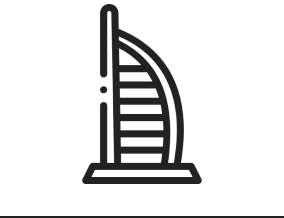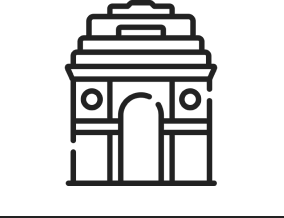Promotions are one of the most powerful tools in a retailer’s strategy. They drive traffic, boost sales, clear inventory, and attract new customers. But when promotions are poorly planned or misaligned with business goals, they can quickly eat into profits instead of increasing them.
This is where a strong Retail Planning Solution makes all the difference. With the right approach and tools, you can design promotions that deliver strong returns and support long-term growth without relying on guesswork.
Let’s break down how to simplify your retail promotion planning and make optimization second nature.
1. Start With Clear Goals
Every promotion needs a purpose. Are you trying to clear seasonal stock, introduce a new product, or increase average order value? Defining your goal upfront helps you design the right type of promotion and measure its success accurately.
Here are a few common promotional goals in retail:
- Boosting short-term sales (e.g., “Buy One Get One Free” or flash sales)
- Increasing brand awareness
- Improving customer loyalty through personalized offers or points programs
- Moving slow-moving inventory
- Encouraging repeat purchases
Pro Tip: Tie every promotion to a measurable outcome, like a 15% increase in weekend sales or a 10% boost in conversion rates.
2. Use Data to Plan Smarter Promotions
Data should guide your promotion planning, not intuition. Look at past campaigns to see what worked — and what didn’t. Analyzing sales data, customer behavior, and seasonal trends helps you identify the right timing, products, and discount levels.
For instance:
- If a product sells well without a discount, you may not need to include it in a promotion.
- If a specific customer segment responds strongly to bundle deals, plan similar offers for them.
Retailers using data-driven promotion planning often see higher ROI because they focus their efforts where they truly matter.
3. Segment Your Audience
Not all customers respond to promotions in the same way. A one-size-fits-all approach rarely works anymore. Segment your audience based on factors like:
- Purchase frequency
- Average spend
- Location or region
- Loyalty status
Then, tailor promotions to each segment. For example:
- Offer first-time buyers a welcome discount.
- Reward loyal customers with early access to sales.
- Send targeted coupons based on purchase history.
This approach increases engagement while minimizing unnecessary discounting.
4. Choose the Right Promotion Type
The type of promotion you choose can make or break your campaign. Here are some popular options that work well in retail:
- Percentage Discounts: Great for driving quick sales, but use them strategically to avoid eroding brand value.
- BOGO Offers (Buy One, Get One): Encourage higher cart value and clear inventory efficiently.
- Free Shipping: Particularly effective in e-commerce, where shipping costs can deter customers.
- Limited-Time Offers: Create urgency and push hesitant buyers to act.
- Loyalty Rewards: Encourage repeat purchases and long-term engagement.
Choose the promotion type that best supports your goals, product category, and audience preferences.
5. Optimize Timing and Duration
Even a well-designed promotion can fail if it’s poorly timed. Timing is everything in retail. Plan your campaigns around customer shopping habits and seasonal patterns.
For instance:
- Launch major sales around holidays, paydays, or shopping events like Black Friday.
- Keep flash sales short (24–48 hours) to build urgency.
- Run loyalty promotions during slower months to maintain steady engagement.
Testing different timeframes will reveal what works best for your customers and products.
6. Leverage Technology for Promotion Optimization
Manual planning is time-consuming and prone to error. Modern retailers use promotion management software and AI-driven analytics to streamline and optimize campaigns.
These tools can:
- Predict promotion performance based on past data.
- Identify the ideal discount levels for maximum profitability.
- Automatically adjust prices and offers in real time.
- Track ROI across multiple channels (online, in-store, email, social media).
Automation saves time, improves accuracy, and ensures promotions stay profitable.
7. Track Performance with the Right Metrics
To know if your promotions are working, you need to measure the right metrics. Some key KPIs include:
- Incremental sales lift: How much extra revenue did the promotion generate?
- Redemption rate: How many customers used the offer?
- Customer acquisition and retention rates: Did you attract new buyers or keep existing ones engaged?
- Profit margin impact: Did discounts cut too deeply into profits?
- Inventory turnover: Did the promotion help clear stock faster?
Tracking these numbers helps you learn from each campaign and refine future promotions for even better results.
8. Avoid Common Promotion Mistakes
Even experienced retailers make promotion mistakes. Here are a few to watch out for:
- Running too many discounts: It trains customers to wait for sales and reduces perceived value.
- Ignoring profitability: Not every promotion that boosts sales improves profits.
- Failing to track results: Without data, you can’t know what’s working.
- Poor communication: If customers don’t understand the terms of a promotion, they won’t participate.
Avoid these pitfalls by planning ahead, staying strategic, and keeping customer experience front and center.
9. Keep Testing and Refining
Promotion optimization is an ongoing process. Test different offers, visuals, channels, and messaging styles to see what resonates best.
For example, you might test:
- “20% Off” vs. “Buy 2, Get 1 Free”
- Email-only promotions vs. social media campaigns
- Weekend flash sales vs. weeklong discounts
Each test provides insights that help you fine-tune your next promotion for even greater impact.
Final Thoughts
Promotion planning and optimization don’t have to be complicated. When you use data, segment your audience, and track performance closely, you can create campaigns that consistently deliver strong results. Incorporating smart Tips for Retail Price Optimization also ensures your offers stay profitable and aligned with customer expectations.
The key is balance driving excitement and sales while still protecting your margins. With the right tools and a clear strategy, you can turn every promotion into a powerful growth opportunity for your retail business.






